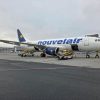 A new generation of pilots is preparing to take their seats in the cockpit—but they’re also stepping into a world of airline operations and scheduling systems that can feel unfamiliar and complex. While pilot rosters are evolving, the reality behind these changes is far more nuanced, especially for newcomers to the flight deck.
A new generation of pilots is preparing to take their seats in the cockpit—but they’re also stepping into a world of airline operations and scheduling systems that can feel unfamiliar and complex. While pilot rosters are evolving, the reality behind these changes is far more nuanced, especially for newcomers to the flight deck.
A pilot’s schedule isn’t a usual 9-to-5 job, or what we would traditionally think of as one. While it doesn’t adhere to the usual work model, an actively flying Captain Donatas Latvenas, Chief Flight Instructor at BAA Training, one of the leading global aviation training organizations delivering both Ab Initio and Type Rating training, says that a pilot’s schedule is dependent on a number of different factors to make it up.
“While we’re starting to see more tools that give pilots visibility and some degree of choice, the keyword here is starting. How your roster looks still depends on your airline policy, the region-wide regulations in place, whether you’re doing a long- or short-haul flight, in some cases your seniority, and even seasonality.”
Major airlines, ACMI providers, regional carriers—all approach flexibility differently, and no two rosters are exactly the same. Many pilots operate on rotation-based rosters, which is where shifts (mornings, afternoons, or nights) and patterns (weekly, bi-weekly, or monthly) change regularly according to a set cycle, says Latvenas. This type of work model ensures that both more attractive and less desirable shifts would be distributed equally among the pilots, while also managing fatigue.
A fixed roster, another type of pilot schedule, is considered to be a more predictable one, says Latvenas. It works on an unchanging pattern, where a pilot knows exactly which days they will be working and which days they will have off, and usually remains the same throughout the month, if not longer. But the predictability comes at the cost of certain flexibility, says Latvenas.
“While you do know your workdays and days off, and it rarely changes, it also means that taking specific days off outside the fixed pattern can be a tricky thing to do, especially if it falls on scheduled workdays. It’s not impossible, just can be a bit more challenging to do so.”
Rotation-based and fixed rosters have always been at the heart of a pilot’s job, but the option of a more flexible schedule is now also affecting long-term decisions for the new pilots, notes Latvenas.
“A flexible roster has no fixed pattern and varies quite a bit every month. Pilots can be working different days and shifts each month, depending on their airline’s operational needs and flight schedules. This also means variable work blocks. For example, if a pilot works five days in a fixed roster and then has four days off, in a flexible roster system, they might fly four days, have three days off, then fly five days, have four days off. Yes, it’s less predictable, but it also can provide fewer consecutive workdays, compared to the other two roster types.”
But it’s not all duty hours and layovers. There are set rules and regulations for pilot flight time (FTL), duty limitations, and rest requirements to manage their workload.
“In Europe, the cumulative duty and flight time limits are in place and also affect a pilot’s roster,” explains Latvenas. “For example, a pilot cannot exceed 60 duty hours in any seven consecutive days or can have only up to 100 flight hours in any 28 consecutive days. There also needs to be at least one weekly rest period, and so on. But usually, a pilot’s roster doesn’t even reach these limits set, and a pilot has more time on the ground.”
While the technical skills and personality development are still very much at the core of pilot training, today’s new generation of pilots faces more than just flying hours and check ride readiness. With pilot rosters depending on a myriad of different factors, they must also learn to navigate a work-life environment that’s far more dynamic. This includes understanding airline contracts, seniority systems, and how different operational models impact their everyday lives.
“Pilot academies don’t necessarily focus on this side of things, but when you’ve got instructors with solid airline experience running the training, they’re the ones passing these real-world insights on to cadets,” explains Latvenas. “And instructors are more than happy to share their experiences, their knowledge about the pilot life, as well as what has changed, and what new realities the new generation will be facing once they step into a cockpit themselves.”
The cockpit may be the ultimate destination for aspiring pilots, but the journey now includes navigating shifting schedules, lifestyle trade-offs, and broader industry changes. Understanding these nuances early on enables cadets to shape their careers more intentionally, not just by mastering the aircraft, but also by learning how to navigate the systems that shape their everyday lives.





